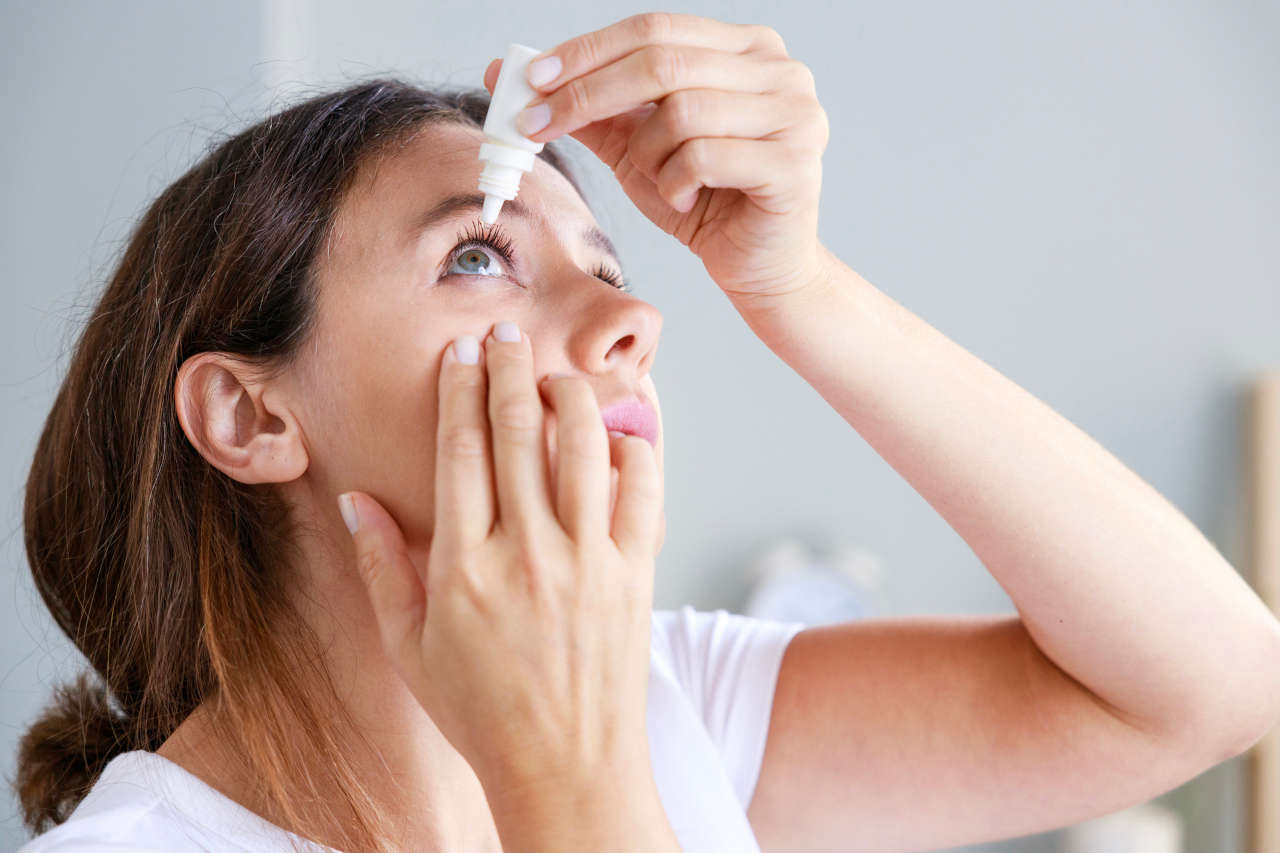
Autoimmune uveitis is an inflammatory eye disease that occurs as a result of an immune system malfunction. This autoimmune condition causes inflammation within the eye, specifically in the uvea or uveal tract, which is the middle layer of your eyes and provides blood supply to the retina.
Speak to a Specialist About Copay Assistance
Though the condition is rare, it ranks as the fourth most prevalent cause of blindness among young individuals in developed countries. Roughly 30,000 new cases of legal blindness are thought to arise from uveitis annually in the U.S.
Autoimmune uveitis is not a serious condition, but it could be sight-threatening if not diagnosed and treated early.
This article discusses the basics of autoimmune uveitis, including its cause, types, risk factors, symptoms, diagnosis, and treatment strategies.
Basics of Autoimmune Uveitis and Its Types
Your eyes are highly sensitive organs that can be affected by internal factors (immune attack) or external factors (drugs/toxins). In autoimmune uveitis, your immune system becomes hyperactive or malfunctions, causing it to attack (initiate an inflammatory response) the uvea in your eyes because it mistakes it to be a foreign object or threat to you. This response causes the release of specific inflammatory mediators (or molecules) that cause inflammation within the eye.
Inflammation can also affect other areas of your eye. Uveitis is further categorized into four main types, which are as follows:
Anterior Uveitis
Anterior uveitis is the most common form of uveitis seen in healthy people. In this type, the inflammation occurs in the front part of the eye and causes redness and pain. It is often referred to as “iritis” because it affects the iris, which is the colored part of your eye.
Posterior Uveitis
In this type, the inflammation occurs in the back part of the eye, the choroid, which is why it is also called “choroiditis.” People with infections (parasite, fungal, or viral) and autoimmune disorders are more likely to develop posterior uveitis.
Though posterior uveitis is the least common, it is more serious than anterior uveitis because it causes scarring to the retina, the cell layer that creates images. Posterior uveitis can lead to vision loss.
Intermediate Uveitis
In intermediate uveitis, the inflammation occurs in the middle part of the eye (between the iris and choroid) called pars plana. This type of uveitis can cause floaters and blurred vision and is primarily common in people with multiple sclerosis (MS).
Pan-Uveitis
If the inflammation occurs in all major parts of the eye, it is termed pan-uveitis. People with pan-uveitis show a combination of symptoms of the three other types of uveitis.
What Are the Common Signs and Symptoms?

The common signs and symptoms include:
- Swelling, redness, and pain in the eye
- Blurred vision
- Photophobia (eye sensitivity to bright light)
- Floaters (floating spots)
- Headache
- Injected conjunctiva (bloodshot eyes)
These symptoms can develop suddenly or gradually in one or both eyes over a few days. Therefore, if you experience any of the above symptoms, contact your healthcare provider immediately.
What Causes Autoimmune Uveitis?
The exact cause of autoimmune uveitis is still unclear. However, it is highly associated with immune system dysfunction, infection, and injury.
In most cases, autoimmune uveitis is also caused by several autoimmune disorders and immunodeficiency disorders, including:
- Ankylosing spondylitis
- Rheumatoid arthritis
- Multiple sclerosis
- Systemic lupus erythematous
- Crohn’s disease
- Psoriasis
- Ulcerative colitis
- Sarcoidosis
- Kawasaki disease
Bacterial and viral infections are another cause, which includes:
- AIDS
- Tuberculosis
- Syphilis
- Herpes
- West Nile virus
- CMV retinitis
- Toxoplasmosis and histoplasmosis
Less often, autoimmune uveitis may also be caused by trauma, injury, and certain toxins.
What Are the Risk Factors for Autoimmune Uveitis?
The following are common risk factors that increase your chance of developing autoimmune uveitis:
- Smoking
- Gender (uveitis is more common in women than men)
- Underlying diseases like autoimmune disorders
- Infections
- Genetics (presence of HLA-B27)
Diagnosis
The diagnosis of autoimmune uveitis is easy and usually done by an ophthalmologist (an eye specialist). An eye specialist performs a dilated eye test for the diagnosis of uveitis.
Moreover, an eye specialist also views the patient’s medical history to check if an underlying disease, such as an autoimmune disorder or infection, is causing this uveitis.
How Is Autoimmune Uveitis Treated?
Healthcare providers typically prescribe steroid medication, which is a first-line treatment. Steroid medication comes in many forms, such as eye drops, pills, intravenous injections, injections in or around the eye area, and eye implants (which deliver medication in small doses). Steroid medications work by lowering eye inflammation, easing pain, and preventing the risk of vision loss.
In some cases, systemic medication is also prescribed to control the immune system, thereby controlling uveitis for the long term.
However, if autoimmune uveitis occurs due to an underlying disease, early treatment of the underlying disease will automatically cure uveitis.
Conclusion
Autoimmune uveitis is a complex and sight-threatening disease characterized by inflammation in the eye’s middle layer, called the uvea. This condition can lead to vision loss if not treated early. However, early diagnosis and a careful treatment plan can effectively treat the condition and prevent the risk of vision loss.
REFERENCES:
- Barisani-Asenbauer, T., Maca, S., Mejdoubi, L., Emminger, W., Machold, K., & Auer, H. (2012). Uveitis- a rare disease often associated with systemic diseases and infections- a systematic review of 2619 patients. Orphanet Journal of Rare Diseases, 7(1), 57. https://doi.org/10.1186/1750-1172-7-57
- What is Uveitis? | Conditions & Treatments | UTSW Medical Center. (n.d.). https://utswmed.org/conditions-treatments/uveitis-eye-inflammation/
- Serraino, C. (2023, August 3). Autoimmunity and the Eyes: A spotlight on Uveitis. Global Autoimmune Institute. https://www.autoimmuneinstitute.org/articles/about-autoimmune/autoimmunity-and-the-eyes-a-spotlight-on-uveitis/
- J. Schreurs, M. W., & Rothova, A. (2018). Autoimmunity in uveitis. Acta Ophthalmologica, 96(5), 481-485. https://doi.org/10.1111/aos.13652
- González, M. M., Solano, M. M., Porco, T. C., Oldenburg, C. E., Acharya, N. R., Lin, S. C., & Chan, M. F. (2018). Epidemiology of uveitis in a US population-based study. Journal of Ophthalmic Inflammation and Infection, 8. https://doi.org/10.1186/s12348-018-0148-5
- Selmi, C. (2014). Diagnosis and classification of autoimmune uveitis. Autoimmunity Reviews, 13(4-5), 591-594. https://doi.org/10.1016/j.autrev.2014.01.006
- Prete, M., Dammacco, R., Fatone, M. C., & Racanelli, V. (n.d.). Autoimmune uveitis: clinical, pathogenetic, and therapeutic features. Clinical and Experimental Medicine, 16(2), 125–136. https://doi.org/10.1007/s10238-015-0345-6
- Papotto, P. H., Marengo, E. B., Sardinha, L. R., Goldberg, A. C., & Rizzo, L. V. (2014). Immunotherapeutic strategies in autoimmune uveitis. Autoimmunity Reviews, 13(9), 909-916. https://doi.org/10.1016/j.autrev.2014.05.003
- Uveitis: autoimmune eye inflammation | HSS Rheumatology. (n.d.). Hospital for Special Surgery. https://www.hss.edu/condition-list_uveitis-eye-conditions.asp
- Horai, R., & Caspi, R. R. (2011). Cytokines in autoimmune uveitis. Journal of Interferon and Cytokine Research, 31(10), 733–744. https://doi.org/10.1089/jir.2011.0042













